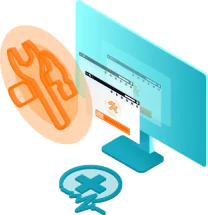CryptoWall 3.0
CryptoWall 3.0 is a ransomware virus that encrypts certain file types on your machine and then blackmails you, demanding money in exchange for a decryption key. Part of what makes CryptoWall 3.0 so dangerous is that they’re incredibly difficult to deal with and the aftermath is often irreversibly devastating.
Ransomware viruses have recently risen to the attention of pretty much everyone due to the mass infections on a global scale. Unfortunately, however, this malware type has been along for much longer than you might think and regular users, just like you, have been suffering from it for well over two decades now. We’re assuming that since you’re on this page, you have also had to face this awful threat. One of its latest variants is called CryptoWall 3.0 Virus, and if this is the reason for you seeking out this page – you’re going to want to stick around. In this article we’ve presented you with a set of instructions that can help you remove this ransomware from your machine and potentially also restore the files it has managed to rob you of.
Ransomware: how it works and what to be aware of
Malicious programs like CryptoWall 3.0 Virus are notoriously elusive for antivirus programs, because of the way they operate. Once in your system, the virus will proceed to scan it for certain file types, after which, one by one, it will start creating copies of these files. The only difference between the copies and originals, however, is that the copies are encrypted – meaning they will be inaccessible to anyone, who doesn’t have the necessary decryption key. And once all that is done, the original files are deleted. The trick here is that encryption is not in itself a malicious process and is actually a means of data protection. And, therefore, antivirus programs will in the majority of cases not detect the process or think of it as something harmful. This is in part why these virus have gained the level of success they enjoy nowadays.
Another one is their stealthy distribution methods, which for the most part include various social engineering tactics, such as spam emails, deceptive notifications and fake warnings. No matter how often security experts own people about it, there are still plenty of users willing to open spam messages and download their attachments without question – regardless of who they’re from and what purpose they serve. Ransomware can often be hidden in the attached files, or it can even be a Trojan horse virus in them, which will later download the ransomware in them. Note that these can be as seemingly innocent as a text or pdf document, so be sure to never interact with content you aren’t 100% sure you can trust. The same is also true for downloadable content, such as torrents, for example. Another common source of these viruses is the so-called malvertisements or fake and compromised online ads. These appear to be your regular popup or banner, but really upon clicking them will automatically download the virus onto your machine.
So, say you learn to avoid all the probable source and you will thus minimize the risk of ending up infected again. But what to do with the current infection? Well, there are several options. You can of course opt for the ransom payment and hope for the best, but we would advise against that. First of all, there is no guarantee as to whether you will actually receive a decryption key from the hackers, and there’s really no justified reason to believe that they will. You’d be surprised to know how many people have gotten burnt this way. What we would recommend is that you remove CryptoWall 3.0 Virus as soon as possible, so as to be sure that it won’t encrypt any more files. After that, there are a few different ways you can try to regain access to your data. You can rely on a special decryptor tool to breach the encryption, or you could attempt to recover the files from system backups. You will find instructions as to how to do that in the same guide below. And as for from now on, aside from being smarter and more careful about your browsing, we would recommend frequently backing up your most important files and keeping them on a separate drive.
SUMMARY:
| Name | CryptoWall 3.0 |
| Type | Ransomware |
| Detection Tool | Some threats reinstall themselves if you don't delete their core files. We recommend downloading SpyHunter to remove harmful programs for you. This may save you hours and ensure you don't harm your system by deleting the wrong files. |
Remove CryptoWall 3.0 Virus
You are dealing with a ransomware infection that can restore itself unless you remove its core files. We are sending you to another page with a removal guide that gets regularly updated. It covers in-depth instructions on how to:
1. Locate and scan malicious processes in your task manager.
2. Identify in your Control panel any programs installed with the malware, and how to remove them. Search Marquis is a high-profile hijacker that gets installed with a lot of malware.
3. How to decrypt and recover your encrypted files (if it is currently possible).
You can find the removal guide here.



127.0.0.1 space1.adminpressure.space
127.0.0.1 trackpressure.website
127.0.0.1 htagzdownload.pw
127.0.0.1 texttotalk.org
127.0.0.1 360devtraking.website
127.0.0.1 room1.360dev.info
127.0.0.1 djapp.info
127.0.0.1 technologievimy.com
127.0.0.1 sharefolder.online
127.0.0.1 install.portmdfmoon.com
127.0.0.1 adkqow01283.pw
127.0.0.1 telechargini.com
127.0.0.1 rothsideadome.pw
127.0.0.1 fffffk.xyz
127.0.0.1 smarttrackk.xyz
127.0.0.1 discretdan.com
Those IPs need to be delete from your Hosts file, afer which you should save the changes and continue with the rest of the guide.
your steps amany for my head i have run spy hunter only , let me hope it will clear every bad thing out of my student pc